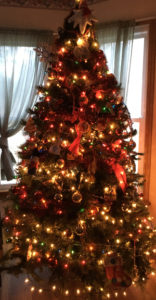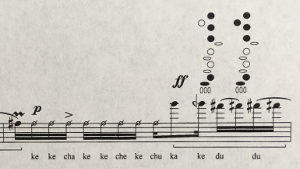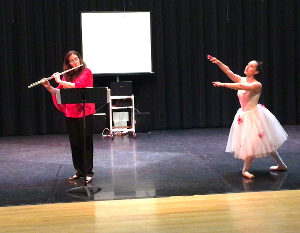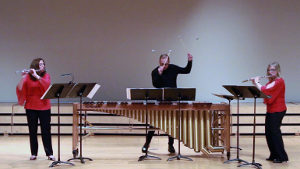It’s that time of year (well past really) where I put together a new recital program and in these parts that’s nigh unto Christmas, right? I mean who doesn’t get totally excited when new music arrives in the mail.

It’s Christmas ! ! ! ! ! !
 I absolutely love putting together a new recital program!
I absolutely love putting together a new recital program!
Searching out new music that fits a selected idea then receiving said music in the mail is one of those perks of being a musician. Those people who are not musicians can’t relate to that at all (those poor people).
I’m definitely a little late in the year to plan my program but it just wasn’t coming together. What I mean is, if I don’t have a central theme from which to center my pieces, then I find it difficult to put my program together. The result of this lack of programmatic focus is that I’m not comfortable picking a date for my faculty recital and thus end up feeling completely behind the proverbial 8 ball.
In today’s day and age I believe that you must really think about your program and its audience appeal. Audiences want to relate to what you are performing. If you give them the classics, they will like it. But it might be ho-hum. If you play the music that is big in the flute world right now – late 20th and 21st century music – you might lose your audience. Well, you will lose your audience.
But if you pick a theme, then select a wide variety of music around that theme, you will have a much better chance of keeping your audience engaged the entire time as they listen to see how the pieces fit together.
I know that when you are in college, you rarely have the freedom to pick a program based on a theme – and rightly so. Typically, college flute majors must program based on a variety of styles and periods in music often with an ensemble piece mixed in. That is the way it has to be. Flute majors must get through a certain set of standard pieces so that they can teach these before they go off on their own. But for those that have the ability, let me encourage you to search out a program that fits your personality, style and theme.
Let me give you some ideas from programs that I have done in the past with success.
Program theme: Flute music with a Spanish flair
Les Folia d’Espanga Marin Marais
Histoire du Tango Astor Piazzolla
Sonata Latina Mike Mower
Vocalization Aguda Carlos Chavez (This work is WAY out there.)
Peruvian Dance Suite Alice Gomez (this piece is a real audience pleaser with 2 flutes, marimba, and bongo)
That was a fun program! You can also dress the part by wearing red and orange.
These days I like to perform chamber music. I think it is more enlightening for the audience to see and hear flute music that is not just me and piano or me alone. Lately, I’ve been performing with a percussionist who lives near me. I think this combination of either flute and marimba, or flute and percussion is quite an audience pleasing combination. It is not easy to find great music for flute and marimba/percussion. There is one problem with this particular chamber group: all the music is 20th or 21st C music with the tonality that ensues. To have a more varied program, we have pulled from the flute and guitar and flute and harp genres. Sometimes this works and sometimes it doesn’t. I just let my percussionist decide what he can and cannot do.
 To add variety to my first flute and percussion recital, I played Zoom Tube by Ian Clarke. This added a great respite from the heaviness of the flute and percussion and kept with the theme because that piece uses the flute as percussion. Plus, it was so much fun to perform!
To add variety to my first flute and percussion recital, I played Zoom Tube by Ian Clarke. This added a great respite from the heaviness of the flute and percussion and kept with the theme because that piece uses the flute as percussion. Plus, it was so much fun to perform!
As an added benefit, I really had to get outside of myself, my limitations, my perceptions of what a prim and proper Eastman DMA would perform in a recital at the college where she is the Professor of Flute.
“Whoo Hoo!”
Histoire du Tango for flute and guitar works very well for flute and marimba and brought in the music and dance forms of South America to the program.
This past year I was not happy with the music that I had chosen. The program just didn’t come together and feel right. So I looked around for more. I came up with the idea that I wanted to bring in all the arts. So I stumbled upon music for 2 flutes and percussion/marimba that kept with this theme. Here is the run down:
Syrnx Claude Debussy
For this literary character my flute partner and I came up with our own arrangement of this piece, and the percussionist added some interesting sounds to add to the color. We also added a particular lighting arrangement to highlight the ambiguous nature of this arrangement.
 Danza de la Mariposa Valerie Coleman
Danza de la Mariposa Valerie Coleman
It was a joy to perform this piece. I collaborated with a ballet dancer who depicted this piece in a beautiful way. It was such a visual display of this piece. If you get a chance, program a piece for you and dancer. It is a wonderful experience. I’m trying to figure out what to do next! Here’s a link to one of our performances of Danza de la Mariposa.
Trio for 2 Flutes and Marimba Marco Schirripa
 This is a fantastic piece for this combination of instruments. It didn’t necessarily fit our theme. But it was a great piece for our instrumentation. So, we decided to perform it anyway. I highly recommend this piece if you have a flute and marimba to perform with! Here’s a link to one of our performances of Trio for 2 Flutes and Marimba.
This is a fantastic piece for this combination of instruments. It didn’t necessarily fit our theme. But it was a great piece for our instrumentation. So, we decided to perform it anyway. I highly recommend this piece if you have a flute and marimba to perform with! Here’s a link to one of our performances of Trio for 2 Flutes and Marimba.
Elkarrizketa Robert Casado
This was a piece for 2 flutes and hand drum. The percussionist thought we could mix it up a bit more so he added different percussion to each variation of this piece. To add the arts to this piece we asked an artist to render what they thought this piece was about. The artist heard the piece and knew what the timing was but other then that they painted as they saw fit. We did this on 2 separate occasions and the paintings were very different both times. At the end of the recital the artist sold their painting to a member of the audience.
Stridulation for 2 flutes and Cello Nichole Chamberlain
I love this piece. We of course changed the instrumentation to marimba instead of cello. But it worked very well. This piece is a mixture of traditional notes and extended techniques. Since this is about the sound a cricket makes, I asked some elementary students to draw pictures of crickets. Then, we put together a slide show that ran while we performed this piece.
Peruvian Dance Suite Alice Gomez
We revisited this piece as the dance element in the movements lent itself to our theme of the arts. It is a beautiful and melodic piece that adds a totally different character to any recital. Try it!
Okay so these are just two samples of programs that I have put together in the last couple years.
What are you programming? Have you programmed any innovative recitals lately?
Let me know, I’d love to hear about it!
Doctor Flute
